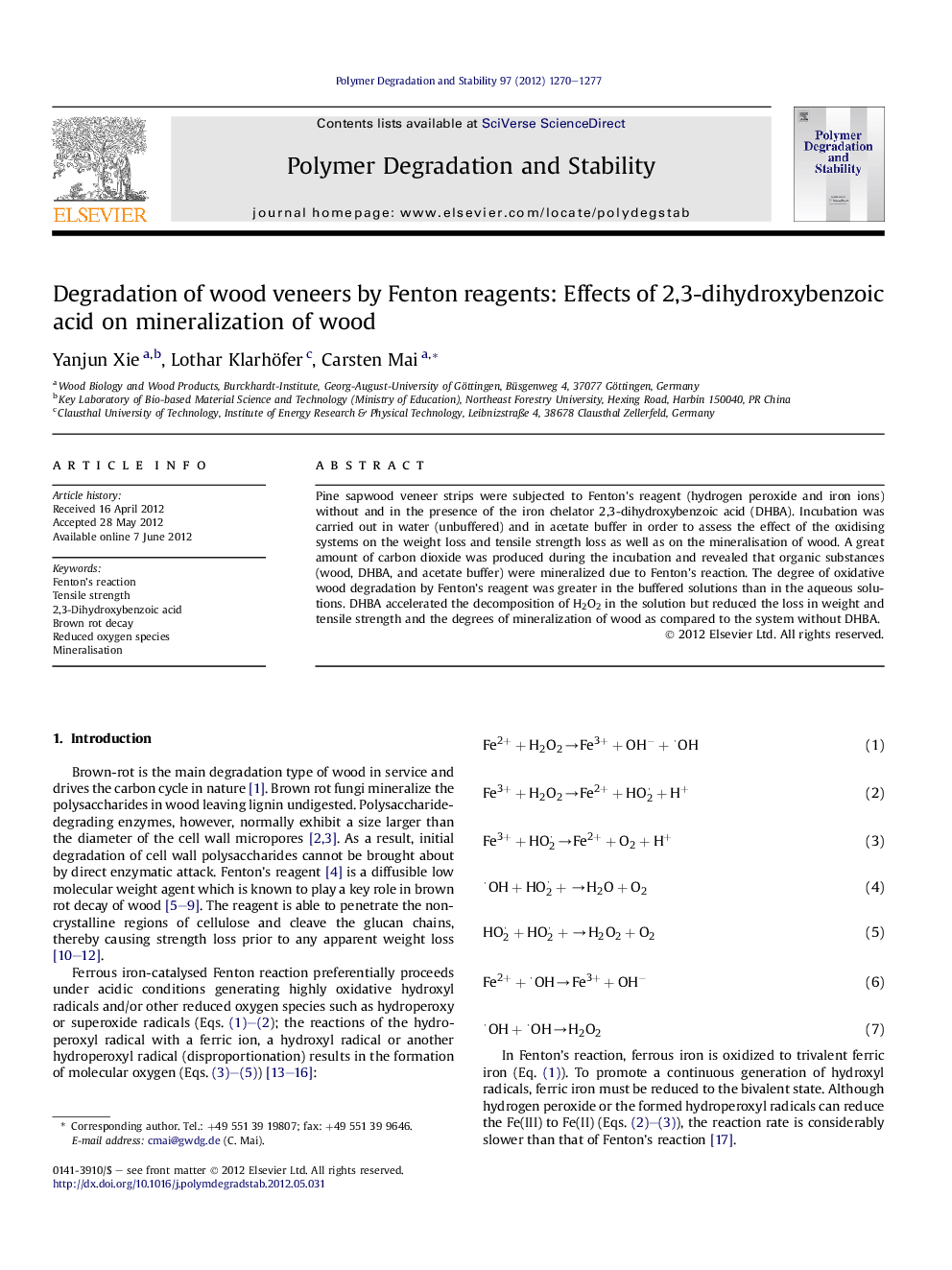| Article ID | Journal | Published Year | Pages | File Type |
|---|---|---|---|---|
| 5202637 | Polymer Degradation and Stability | 2012 | 8 Pages |
Abstract
Pine sapwood veneer strips were subjected to Fenton's reagent (hydrogen peroxide and iron ions) without and in the presence of the iron chelator 2,3-dihydroxybenzoic acid (DHBA). Incubation was carried out in water (unbuffered) and in acetate buffer in order to assess the effect of the oxidising systems on the weight loss and tensile strength loss as well as on the mineralisation of wood. A great amount of carbon dioxide was produced during the incubation and revealed that organic substances (wood, DHBA, and acetate buffer) were mineralized due to Fenton's reaction. The degree of oxidative wood degradation by Fenton's reagent was greater in the buffered solutions than in the aqueous solutions. DHBA accelerated the decomposition of H2O2 in the solution but reduced the loss in weight and tensile strength and the degrees of mineralization of wood as compared to the system without DHBA.
Related Topics
Physical Sciences and Engineering
Chemistry
Organic Chemistry
Authors
Yanjun Xie, Lothar Klarhöfer, Carsten Mai,
